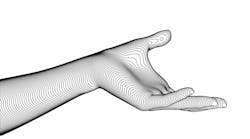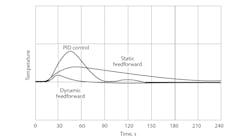[sidebar id =1]Greg: Batch processes have benefited enormously from the ANSI/ISA 88 Batch Control Standard. Here we look at what can be done to help provide the automation to increase the profitability, safety and reliability of continuous processes. I have always sought to find concepts that provide an understanding to see the commonality rather than getting lost in the details. It is kind of like the difference between an aerial view of a wilderness rather than being deep and lost in a forest. Some seem to enjoy thinking a process is so unique that only they can provide what is a totally special solution. What excites me are the lessons and principles developed from all processes that enable us all to make improvements. This is a key to the advancement of the profession. If every solution is totally unique, we don’t have a profession. Could it be that one of the reasons why there are not many universities in the world offering bachelor degrees in automation and process control is a lack of understanding and documentation of what is common in terms of practical proven solutions?
Stan: Dustin Beebe, president and CEO of ProSys and member of the committee for the Technical Report ISA-TR106, “Procedure Automation for Continuous Process Operations—Models and Terminology,” provides us with much needed insight, understanding and guidance to achieve an overall philosophy and approach that provides a framework for solutions to applications that may seem to be too complex and diverse for generalization.
Greg: In the engineering technology department where I spent most of my career, we made the most of the synergy of modeling and control. I tend not to see this today in specialty chemical and biological process applications. Dustin, what do you see?
Dustin: Increasingly recognized are the opportunities of procedural automation and state-based control, and the role of first-principle dynamic models in making the most of these opportunities.
We’re asking ourselves, how can we automate the actions by the operator, such as changing modes, outputs and setpoints for different states? If we can do this, we have repeatable actions that can be continuously improved to increase process safety, capacity and efficiency. The role of the operator is elevated to be more of a troubleshooter.
This automation can also deal with operator turnover. Not only is there a generation of operators retiring, but there is the risk that replacements may only stay in the job for a few years before moving on. The average amount of time Millennials stay in a job is about 18 months. We have larger issues than just training the replacements of retirees. Also, what was acceptable as a risk 20 years ago is far from permissible today.
The success of the ISA standard on batch control points to the need for a standard for continuous processes. We have the first step in terms of the ISA technical report on procedural automation to define the terminology and concepts and set the stage for a standard.
In batch processes, you automate every action. What we do today in continuous processes is not sufficiently defined or understood. We don’t need to automate all the actions for all of the operational states in the control system. We justify what needs to be automated in continuous processes differently than batch. We use state-based control as an effective style of procedural automation. For example, there may be operational states for each piece of equipment in terms of being idle, preparing for startup, and then filling, pressurization, heating up, going on temperature and composition control, running, making transitions in terms of product changes, and dealing with abnormal conditions such as failures, severe upsets and shutdown. The unit operation is always in a state.
An important aspect is preventing escalation of a problem to activation of the safety instrumented system (SIS) and possible shutdown. An automated, localized and coordinated response can be taken to operate in a degraded state that keeps a unit running. For example, consider the case of a loss of catalyst. There is five minutes of hell building up reactants. Instead of a shutdown, state-based control can manipulate a whole bunch of conditions to minimize reactant buildup.
Greg: Shutdown of a unit operation has far reaching consequences in terms of disruption of downstream and upstream operations, the suppliers of raw materials and users of the products. Shutdowns and startups stress equipment. The states during shutdown and startup are often the most hazardous and least efficient states. The loss in profitability goes way beyond the obvious loss in onstream time.
The November 2009 Control Talk column, Show me the Money – Part 1 mentions how Michel Ruel has eliminated manual operation and automated the best of operator actions.
When operators say a start or special mode is too difficult and situational to automate, I take this as a clue that there is an even greater upside including benefits by me taking the best of the operator actions and using knowledge from a working prototype to eliminate any operator actions. I have automated a lot of startups as seen in humorous retakes, such as “Wally and the Beave Automate Reactor Startups” in the Momentum Press book Process Control Case Histories: An Insightful and Humorous Perspective from the Control Room.
A particularly memorable experience was a centrifugal compressor that would shut down multiple times on each attempted startup. Operators claimed it was impossible to automate and that the startup was so tough, only they could do it. I found out from several operators their version of what they had to do. I thought about the first principles and what I knew about compressor control, and used a simulation to develop and test a strategy. The automation of the startup got the compressor running in a matter of minutes without any shutdowns. Previously, it might take one or more shifts to get to this point. The automation was able to preemptively deal with the very fast dynamics associated with compressor pressure and surge control. Operator actions are not fast enough, knowledgeable enough, multivariable enough, attentive enough or consistent enough. Also. operators lack the ability to anticipate the delays and trajectories of variables.
Trajectories of process variables into the future, as seen in MPC operator graphics and by means of simple computation for PID control (as noted in the 6/26/2016 Control Talk column “Future PV Values are the Future” can help mitigate the misinformation created by digital displays of current values and human nature. The trajectories help forgo human impatience and lack of anticipation. I can’t overemphasize how important these trajectories are for improving automation and human understanding.
[sidebar id =2]
{pb}
Stan: What are some other opportunities?
Dustin: The business drivers are there. Faster and smoother startups can lead to less equipment stress and greater efficiency and capacity. By making transitions faster, more flexible and accurate, sales of new products can be increased and markets expanded to new customers. Actions are repeatable and patterns can be found that lead to further improvements. Operators have more time and intelligence to understand problems.
Take the simple case of starting up a flow loop. The PID output needs to be pre-positioned (e.g., remote output mode) to provide a stroke that puts the flow above the sensor’s low rangeability limit. The PID setpoint is then ramped (e.g., remote setpoint mode) until the flow is near the normal operating point. The PID is then released to have its setpoint manipulated for Cascade Control, State Based Control or Model Predictive Control.
Greg: For tight shutoff valves, the significantly greater stiction that is largest near the closed position may require pre-positioning to a much larger stroke, particularly if the sensor is a magmeter or Coriolis meter, which has considerably better rangeability than other flowmeters. An on-off valve posing as a control valve will not only reduce flow control rangeability but can cause State Based Control to be much less than expected despite the best procedures. For more on this threat, see the March 2016 article, “How to specify valves and positioners that do not compromise control” and the associated white paper “Valve Response – Truth or Consequences.” What are some of the challenges?
Dustin: We need a framework and overall philosophy to document what’s needed, and the means of communication. With ISA106, we’re trying to provide guidance at a high level that’s an enabler rather than a restrictor.
Stan: What has been learned in software development to provide guidance?
Dustin: Agile Software Development and the Scrum Model can help us realize how to use a working prototype rather than words to develop the automation required. You can’t use the actual plant as a working prototype for exploration, experimentation and testing. You need a virtual plant to provide an effective working environment.
You can’t expect operators to explain what is going on during these different states. They spend most of their time on running the plant and are most focused on this state. Many are uncomfortable with trying to explain what they do, and why, for different states—especially startup. Even if you could depend on operators, and for that matter, process engineers, to have the understanding and communication skills needed, you would spend endless hours trying to figure out what they do and documenting all the details.
The better approach, instead of pages and pages of documentation and questionable details, is to develop a working example.
[javascriptSnippet]
Greg: How do we get the best working example?
Dustin: You need a dynamic simulation using first principles that don’t violate the laws of physics and thermodynamics. The process rules! The ultimate customer is the process and not the operator, process engineer or plant management. We can negotiate with these people, but not the process.
[pullquote]We don’t need high fidelity for developing procedural automation and state-based control. We need all process relationships to be included that affect the state, but the process variables or manipulated variables only need to be in the ballpark.
The dynamics need to be realistic enough so as to not break the procedure or create improper suppositions. We’re not trying to tune controllers with the simulations.
Greg: The feasibility of some override, valve position control and feedforward strategies depend upon knowing deadtimes and time constants. An override or feedforward correction may arrive too late, creating more of a problem. A valve position control strategy may cause too much interaction and not be able to deal with abnormal situations. For example, open-loop backups are often necessary to prevent compressor surge and environmental pH violations. (See the 6/26/2016 Control Talk Blog “Control Strategies to Improve Process Capacity and Efficiency - Part 2.
Stan: How do you increase reliability?
Dustin: One person does the State Based Control and another does the simulation. The fidelity for each variable is defined. These people work together and work out any problems. The tendencies are to go to a higher level of fidelity than needed and to oversimplify the automation. Some spend so much time on simulation that there is not enough gas or time for getting the automation right.
You need to remember the simulation is benign and cannot cause a plant to blow up. Designing and implementing automation is serious business. If you start breaking things in the simulator, you need to hop back to automation.
Keep in mind the simulation is not an Operator Training System (OTS) but is being used to design automation. The simulation fidelity requirement for an OTS after Procedural Automation and State Based Control may be less, since the operator tasks have been simplified. This is not to say an OTS is not important, but that it takes on more of the role of instilling confidence and understanding of the PCI.
Greg: The OTS is critical for keeping the automation online. Otherwise, the first problem may be blamed on the new automation. Also, operator buy-in can lead to greater appreciation and helpful suggestions. How does PCI differ from capital projects?
Dustin: Capital projects are like a waterfall. There is no going backwards. In PCI, you can go back and forth until you find the best path and results. The simulations must be continuously available, pertinent and usable. These simulations provide the liberty to experiment, to explore, and discover unexpected opportunities. Control engineers can learn faster on these simulations, which is important because plant engineers may only be in their position for three years. The best way to learn is by way of the dynamic experiences of actual plant states in the working environment of the actual distributed control system.
Once a plant sees the PCI in a working example, it can blossom into a whole concerted effort. Millions in first-year benefits can get a whole lot of attention.
For more on this approach and its importance, see the ProSys white paper by Dustin Beebe, “The Role of Dynamic Simulation in Procedural Automation/State Based Control and Modern Controls.”
“Top Ten Tips on How to Pronounce Louisiana Words”
- (10) File Gumbo - It isn’t pronounced file as in a filing cabinet. It’s fee-lay gumbo.
- (9) If you meet someone who is an Hebert, don’t say her-bert. Say ay-bear. Bobby Hebert may be one of our most famous!
- (8) That delicious rice dish - Don’t order jam-ball-ayuh. It’s jum-bul-iyah.
- (7) Laissez-les Bon Temps Roulez - Most of the time if people see this they don’t even try to pronounce it, but the way to say it is "lay-zay-lay-bon-ton-roulay." It means let the good times roll.
- (6) Geaux Tigers! - You don’t have to be in Louisiana that long to figure out that is not pronounced guh-ox. Just ignore the x and say go!
- (5) Poboys - Every time I hear someone order a poor-boy I just shake my head.
- (4) Same goes when people order cray-fish. We call them craaww fish.
- (3) Lagniappe - A lot of times people hear this and then read it and have no idea the same word was being said. But you pronounce this "lan-yap," and it means something a little extra.
- (2) Pralines - This dessert which some claim was invented in Louisiana, has many delicious flavors and types, but there is some disagreement as to how to pronounce the name. Some say pray-leens, some say prah-lines. I say prah-lines and I’ve got a great recipe.
- (1) Beaucoup - Some might say bow-coup, but truly you say, boo-coo and it means a lot or very—i.e. someone who needs alarm management gets boo-coo alarms.




